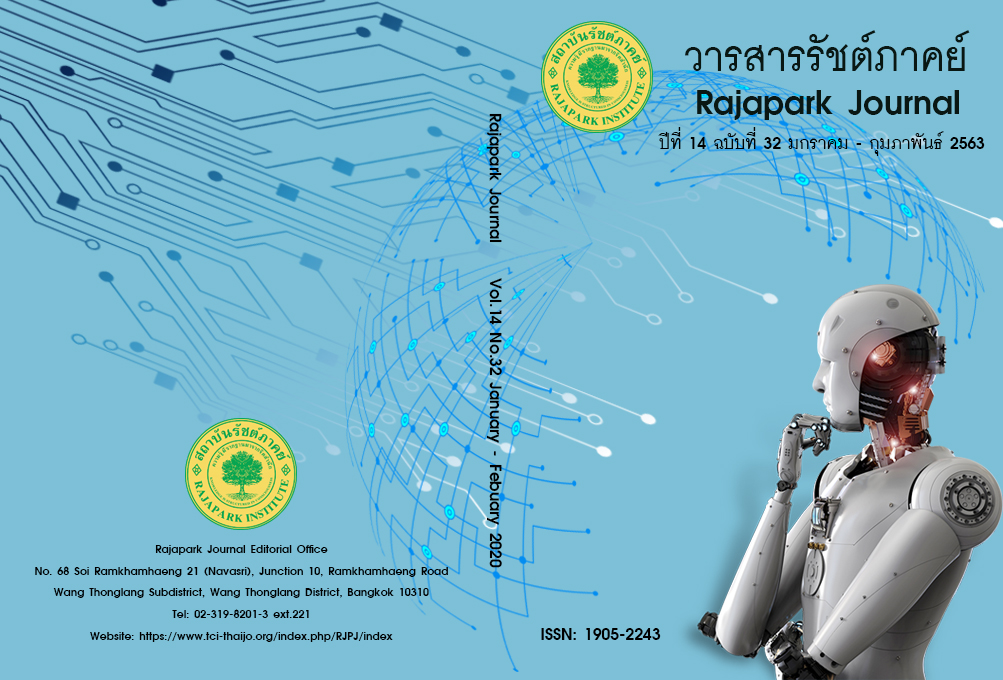Consumer Behavior in Accepting Electronic Health Technologies Health Care Air Purifier
Main Article Content
Abstract
This research aims to study consumer buying behavior in accepting health electronics technology in air purifiers. This research used qualitative research method with in-depth and semi-structured interviews. 27 key informants were selected for content analysis. The study found that the factory group focused on air pollution in the factory rather than air pollution with PM2.5. Buying air purifiers referred to hygiene regulations, safety and health of employees which comply with regulations and laws of the Ministry of Industry. Other factors are the features of the product that meets the room size and benefits from air purifiers. The price must be on budget. Some places considered from the experience of manufacturers or distributers, ease of use, warranty and after sales service. Laboratory group’s considerations are mostly similar to factorygroup but the difference is in order process which signed approval from authorize person or the executive is needed. As for the consumer group, the focus is on air pollution from PM2.5. The considerations of buying were based on trend, the price, the brand, the benefits, the features and ease of use.
Article Details
Views and opinions appearing in the Journal it is the responsibility of the author of the article, and does not constitute the view and responsibility of the editorial team.
References
Braun, V., & Clarke, V. (2006). Using The matic Analysisin Psychology. Qualitative Research in Psychology, 3,
–101.
Corbin, J., & Strauss, A. (2008). Basics of Qualitative Research: Techniques and Procedures for Developing
Grounded Theory. Sage, Thousand Oaks. https://doi.org/10.4135/9781452230153
Eagly, A. H., & Chaiken, S. (2007). The Advantages of an Inclusive Definition of Attitude. Social Cognition, 25,
–602.
Kotler, Philip, & Kevin Lane Keller. (2009). Marketing management. Upper Saddle River, N.J.: Pearson Prentice
Hall.
Mu, Q, & Zhang, J. (2014). “Air pollution and defensive expenditures: Evidence from particulate-filtering
facemasks”, SSRN working paper, available at SSRN 2518032.
Muindi, K., Egondi, T., Kimani-Murage, E., Rocklov, J., & Ng. N., (2014). We are used to this: A Qualitative
Assessment of the Perceptions of and Attitudes towards Air Pollution amongst Slum Residents in Nairobi.
BMC Public Health, 14(226).
Phuseerit, T., Hoksuwan, P., & Bunumphai, T. (2016). Causal Factors for The Adoption Innovation Teacher’s TV
for Teachers and Educational Personnel. Journal of Education, Mahasarakham University, 10(4), 32-51.
Rogers, E.M. (2003). Diffusion of innovations. (5th ed.). New York: Free Press.
Rojsiridamrongkul, K., & Manahirunvet, P. (2015). Factors Affecting Decision to Buy Electronic Components in
Type of Capacitors of Electrical and Electronic Appliance Industrial Factories. Veridian E -Journal, Silpakorn University, 8(3), 919-941.
Webster Jr., F. E. and Wind, Y. (1972): A General Model for Understanding Organizational Buying Behavior,
Journal of Marketing, 36(2), 12–19.


